Enermax Aquafusion ADV 240
INTRODUCTION
Let's take a closer look at the Enermax Aquafusion ADV 240, a 240mm sized AIO aimed to effectively cool down mid to higher-end CPUs. Can it outperform the other available contestants or is it just another AIO like any other one?
POSITIVE
- Great Performance at 120W
- Great Noise-to-Performance ratio at 120W
- High-Quality
- Solid LED Implementation
NEUTRAL
NEGATIVE
- The Water block/Pump could have had a 3-pin ARGB cable just attached to it by default
WHAT'S IN THE BOX?
The new Aquafusion ADV 240 from Enermax comes inside the generally standard AIO type of packaging. Inside we will find the following items:
- Enermax Aquafusion AIO
- 2x SQUA 120mm Fans
- ARGB Controller
- Thermal Paste
- Installation Hardware AMD & Intel
- Cabling

Down below you will also find a short summary of the coolers specs:
| Name | Enermax Aquafustion ADV 240 |
| Dimension (Radiator) | 274x120 & 27mm (Length x Width & Thickness) |
| Fan |
Squa ADV 120mm |
| Fan Airflow |
< 79,8 CFM |
| Fan Connection | PWM |
| Fan Speed |
< 2000 RPM |
| Fan Noise | < 36,2db |
| Fan Air Pressure |
< 3,6mm/H2O |
| Color |
Black White |
| RGB |
Center of Fans Line around Fan border Line around water block/pump Thin lines & Logo center of water block/pump |
| RGB Connection |
Fans - 3-Pin ARGB Water block/Pump - Proprietary Daisychain - Adapted to 3-Pin ARGB afterward |
| Ram Restriction | None |
| Extra | Included ARGB controller |
COMPATIBILITY
Thanks to the inclusion of mounting hardware compatible with newer and older sockets, the Enermax Aquafusion ADV 240 can be mounted on every nowadays relevant socket. Down below you will find the full compatibility list:
| Intel | AMD |
| LGA1700 | AM5 |
| LGA1200 | AM4 |
| LGA115x | AM3/+ |
| LGA2011 | FM2/+ |
| LGA2011-3 | FM1 |
| LGA2066 | |
| LGA1366 |
INDIVIDUAL COMPONENTS
TUBES

The tubes of the Enermax Aquafusion are sleeved using a relatively good-feeling fabric sleeve. They seem to be on the same level as other higher-quality AIOs and thanks to them being adjustable at the water block, it is easy to adjust and use them in an effective way.
For their length, we would have preferred 450mm long tubes to be used. Although 400mm long tubes are acceptable for 240mm AIOs, longer is usually the better choice.

RADIATOR
The standard-sized 240mm big and 27mm thick radiator doesn't immediately seem to have something special going on. Its 21FPI density might be slightly higher than the general average for AIOs, but nothing completely out of the ordinary.

However, the edges of the radiator seem incredibly small considering other alternatives out there. Although they are still present given that they are required to allow the water to travel back through the radiator, both ends of the radiator are significantly smaller than usual. This makes potential installation into already crammed spots significantly easier.
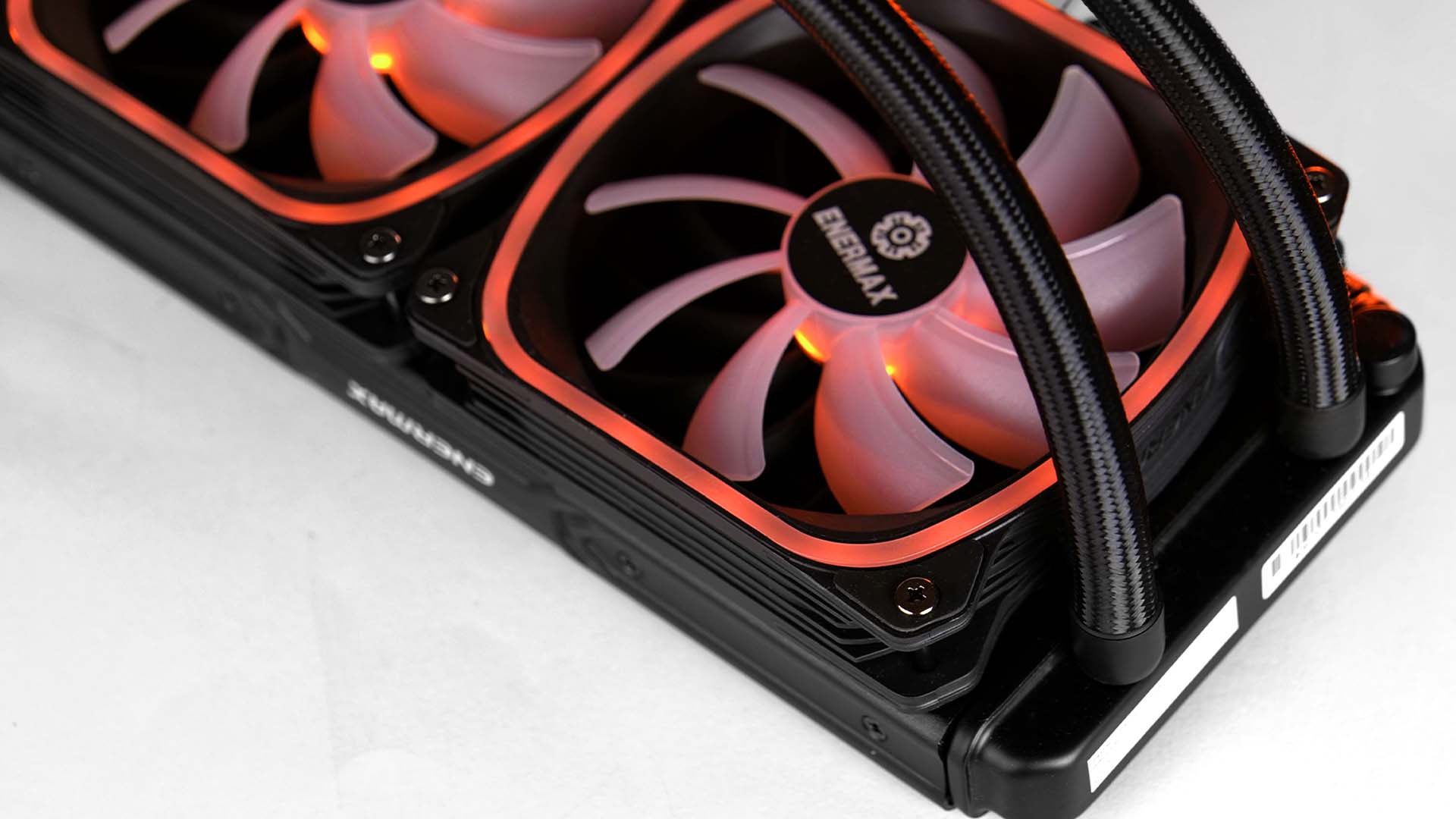
A little design accent of the radiator can be found on both long sides of the radiator. Instead of nothing, Enermax decided to install an additional Fan shroud providing the user with additional aesthetic accents and a white Enermax logo.

BASE & PUMP
The water block & pump combo of the Aquafusion uses a ceramic bearing with an undisclosed pump to get the hot water away from the CPU with the help of an all-copper base.
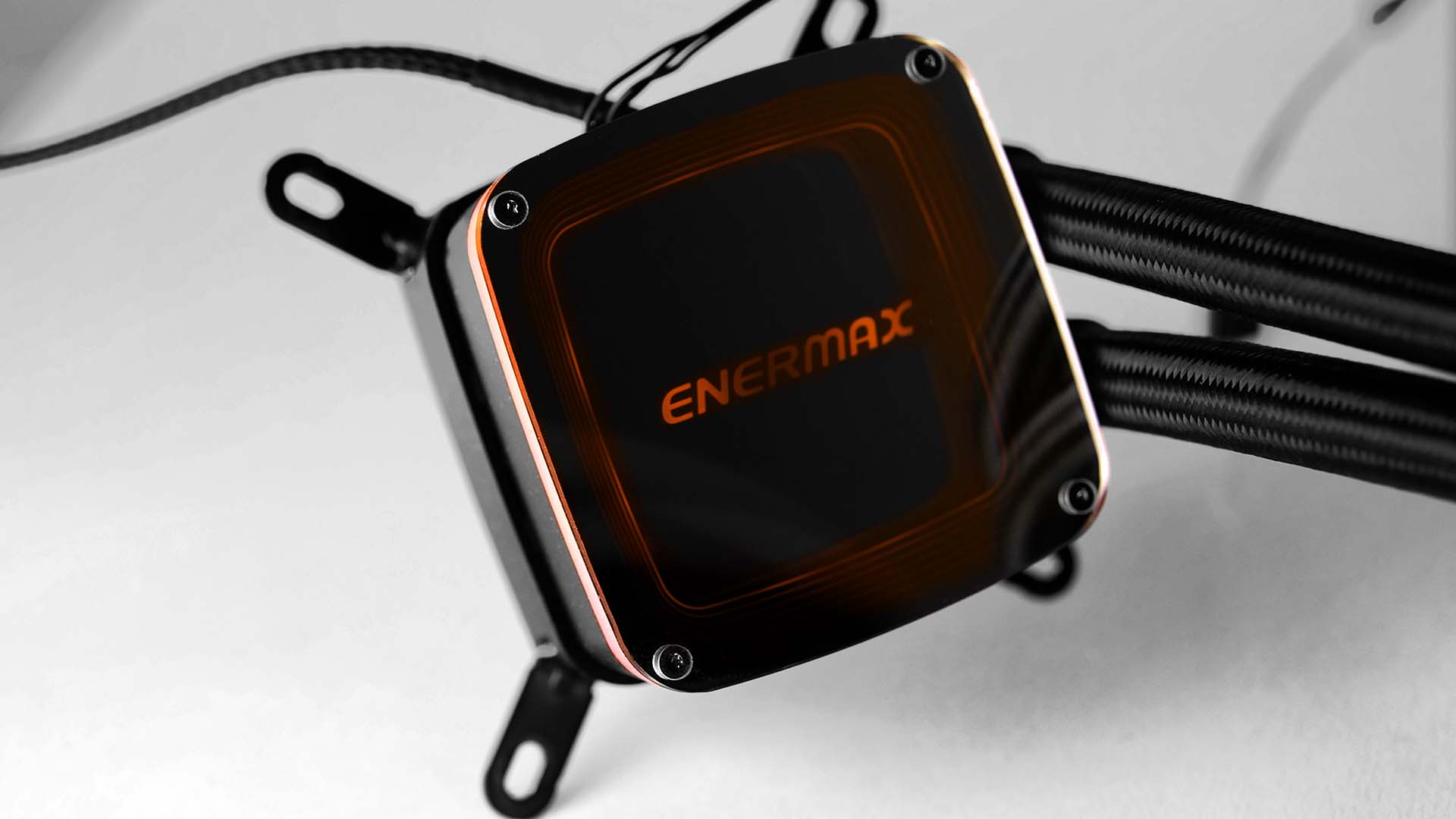
At the top of the combo, we will also find the eye-candy portion of the product. There is a relatively thick ARGB line going around the block and additional thinner lines on the top side. To top it off there is also an Enermax logo at the very center of the block which is repeated, theoretically indefinitely, with the help of the usual infinity mirror approach.
Although we are not the biggest fans of infinity mirrors as a whole, the implementation and used LEDs seem to be strong enough to not be individually visible to the naked eye and the color transitions are fluid. Overall a good implementation.

To power and control the pump, the user can use the pre-attached 4-pin PWM cable. For the lights, the user is however required to remove the pre-attached piece of rubber hiding the proprietary connector which allows for a standardized 3-Pin ARGB cable to be connected.
Under the hood, Enermax advertised some additional patented technologies aimed to increase the overall cooler performance. Two of these solutions: CCI (Central Coolant Inlet) and SCT (Shunt-channel Technology), are ways that allow the coolant to be injected into the center of the water block whilst keeping shorter coolant flow paths resulting in faster heat transfers and avoiding heat surges. Although impossible to test as their own technology, we will see how the AIO performs down below.
FAN
The fans that come with an Aquafusion ADV 240 are Enermaxes' inhouse made Squa 120mm fans spinning at up to 2000 RPM whilst pushing up to 79.8CFM at 3.6mm/H2O.

Their speed is controllable using a 4-Pin PWM cable whilst their lights can be adjusted using a standard 3-Pin ARGB cable. To make it easier daisy-chaining and splitters can be used to run everything using a single header.

Apart from the water block, there is also a lot of ARGB- going on for the fans. The center of the fans has an undisclosed amount of LEDs installed which are shining through the milky-acrylic wings. Around the fans, there is also a relatively thick line of LEDs present that make a full circle around the fan. Instead of being completely round or square, the form is something in between, a square with severely rounded edges.
APPEARANCE
Overall, the Enermax Aquafusion ADV 240 makes a solid impression. The quality seems to be on point, the ARGB implementation is solid, and nothing wiggles that shouldn't.
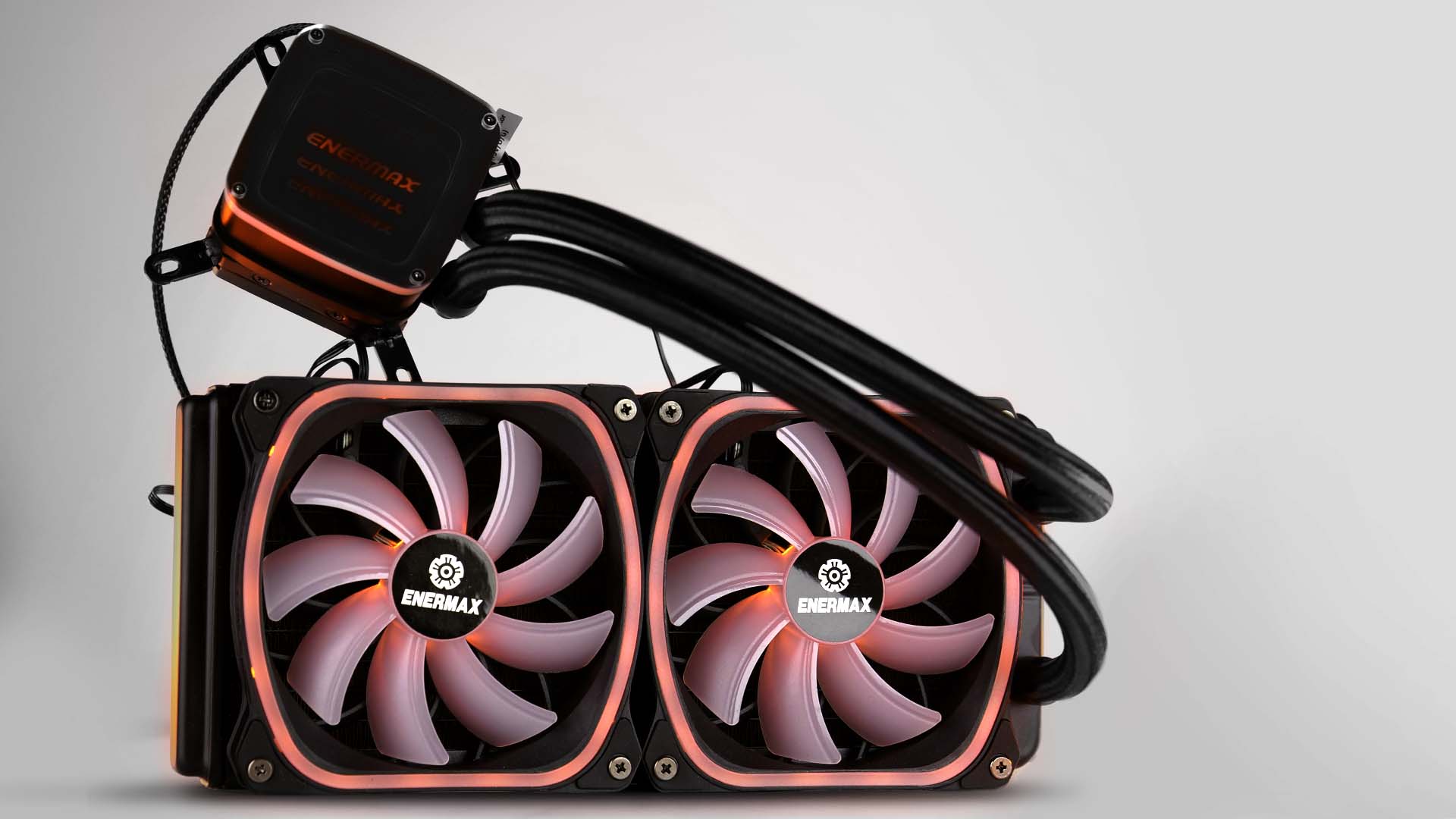
Although we are not the biggest fans of infinity mirrors, we must say that the thin lines in the central part of the water block make the complete unit looks much higher quality and give it a modern but modest design.
BENCHMARK
We benchmarked the cooler using our new CPU Cooler Benchmark Machine featuring 3 different Workloads at 320, 250, and 120W.
For the Aquafusion ADV 240, only the 120 and 250 watts workload applies as neither this one nor any other 240mm AIO was capable of keeping the CPU from thermal throttling at 320 watts going through the socket.
120W

At our lowest workload, the Enermax Aquafusion ADV 240 managed to keep the 13900K at 32.6°C above ambient This is a surprisingly good result resulting in the "small" 240mm AIO outperforming industry giants such as a Noctua NH-D15 or Arctic liquid Freezer 240. Interestingly enough, the Aquafusion 240 even managed to outperform the much bigger 360mm Arctic Liquid Freezer, a result we interpret as the AIO being better at taking away small amounts of heat more effectively.

After slowly decreasing the fan speed we created a noise-to-performance graph. Here we are able to see something that seems like a terrible noise-to-peformance ratio at first, however, the Aquafusion 240 proves to be incredibly loud at first, but with a lot of thermal headroom. While lowering the fan speed hugely decreases the created noise, it has little effect on the CPU temperature. Once the fan spins slow enough, between 60-50% of its max speed, we can actually see that the noise-to-performance ratio is better than the one created by a Noctua NH-D15 once both are on the same level.
250W
At 250 watts, the Aquafusion 240 managed to keep the 13900K at 65.7°C above ambient. Ramping the workload up actually increased the gap to the iconic Arctic Liquid Freezer II 240 in favor of the Aquafusion. In comparison to the NH-D15 however, the Aquafsion fell behind.

On the Noise-to-Performance, we can see that the Aquafusion does not particularly enjoy 250 watts. Although it was in front of a Noctua NH-D15 depending on the fan speed at 120 watts, once 250 watts are being pushed into the loop, the Aquafusion is left behind.

CONCLUSION
Although Enermax decided to overstep their advertisement slightly by stating the Aquafusion can cool down 300W+, which in our test was far from the truth, it has a good spot in this market.

At a workload of 120 watts, the Aquafusion ADV 240 was capable of keeping an excellent noise-to-performance ratio between 50 and 60% fan speed. The result was actually so good that it outperformed the industry standard for a good air cooler.
However, once the workload was pushed above 200 watts, we started to see the first hick-ups. Ratios going down, the best achievable temperature being below other AIOs, and so on.

Therefore, we believe that Aquafusion should be advertised to be used where it's best suited. Gaming environments.
Although our benchmarks proved that the Aquafusion 240 is perfectly capable of cooling down 250 watts, which would be an i7 13700K at full blast on work-related workloads, or even a 13900K at times, it shouldn't be used for these environments.
In our opinion, it seems like one of the best AIOs inside gaming builds. As it's not unusual to see 100-150 watts of package power during gaming, it is very unlikely that the CPU will spike far above that. And in that range, the Aquafusion proved to have one of the best ratios that 240mm AIOs have reached so far.

Paired with that conclusion, the AIO makes a solid impression. It feels sturdy, the LED implementation is solid, and thanks to Enermax sticking to non-proprietary end-connectors and a good CPU socket compatibility list, it is easily integrable into any given system.
Therefore, although we believe the Aquafusion 240 could be used in high-end systems, we would recommend using it in mid- to higher-end systems that are built for gaming primarily.

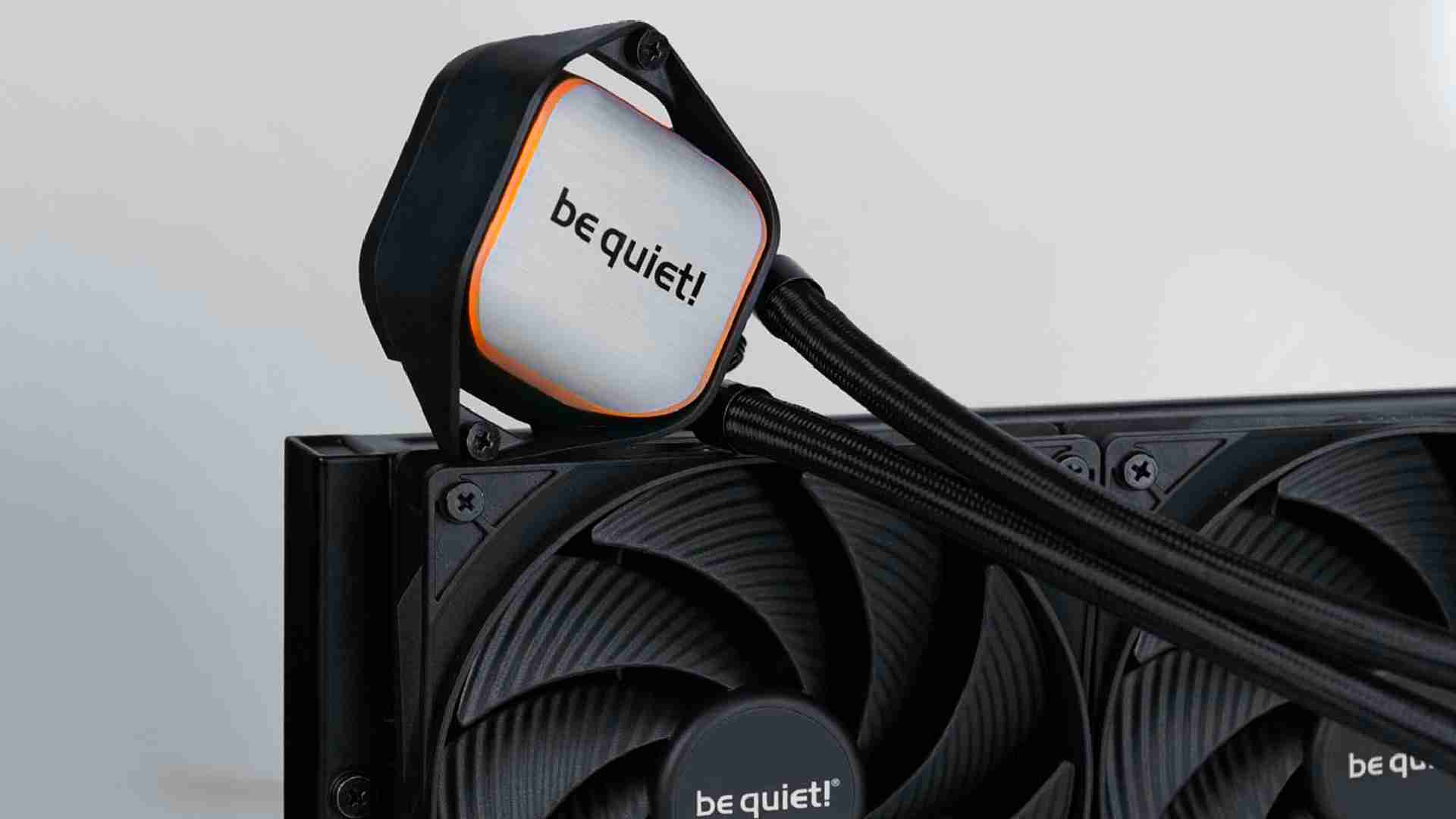
be quiet! Pure Loop 2 280
Using their newest Pure Wings 3 in 140mm, be quiet! tries to squeeze every inch of performance out of their Pure Loop 2 Serie
Read More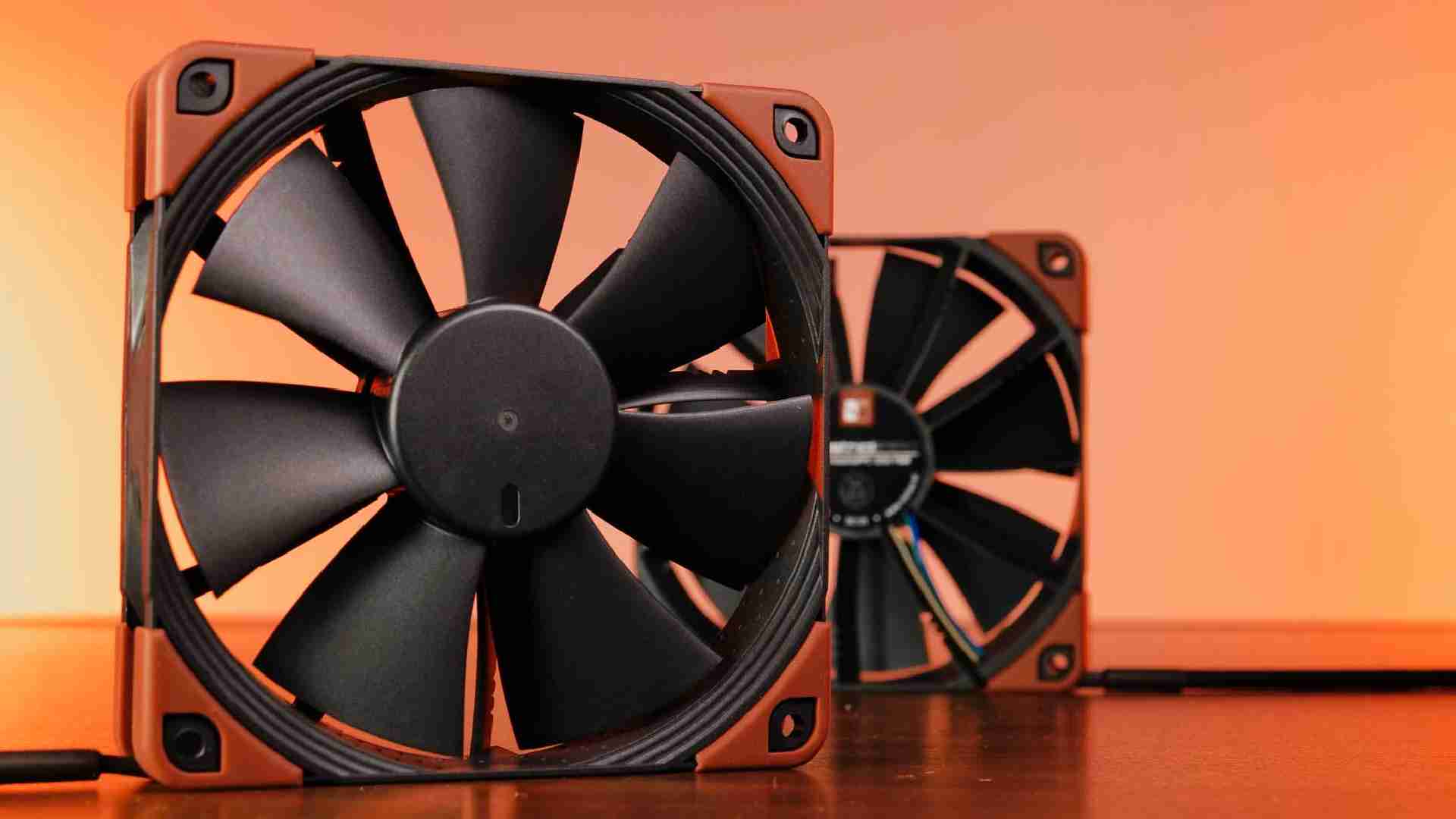
Noctua NF-F12 industrialPPC 3000PWM Review
Monsters. The best word we could find to describe Noctuas industrial line of Fans is Monster. Lets find out why their 3000RPM
Read More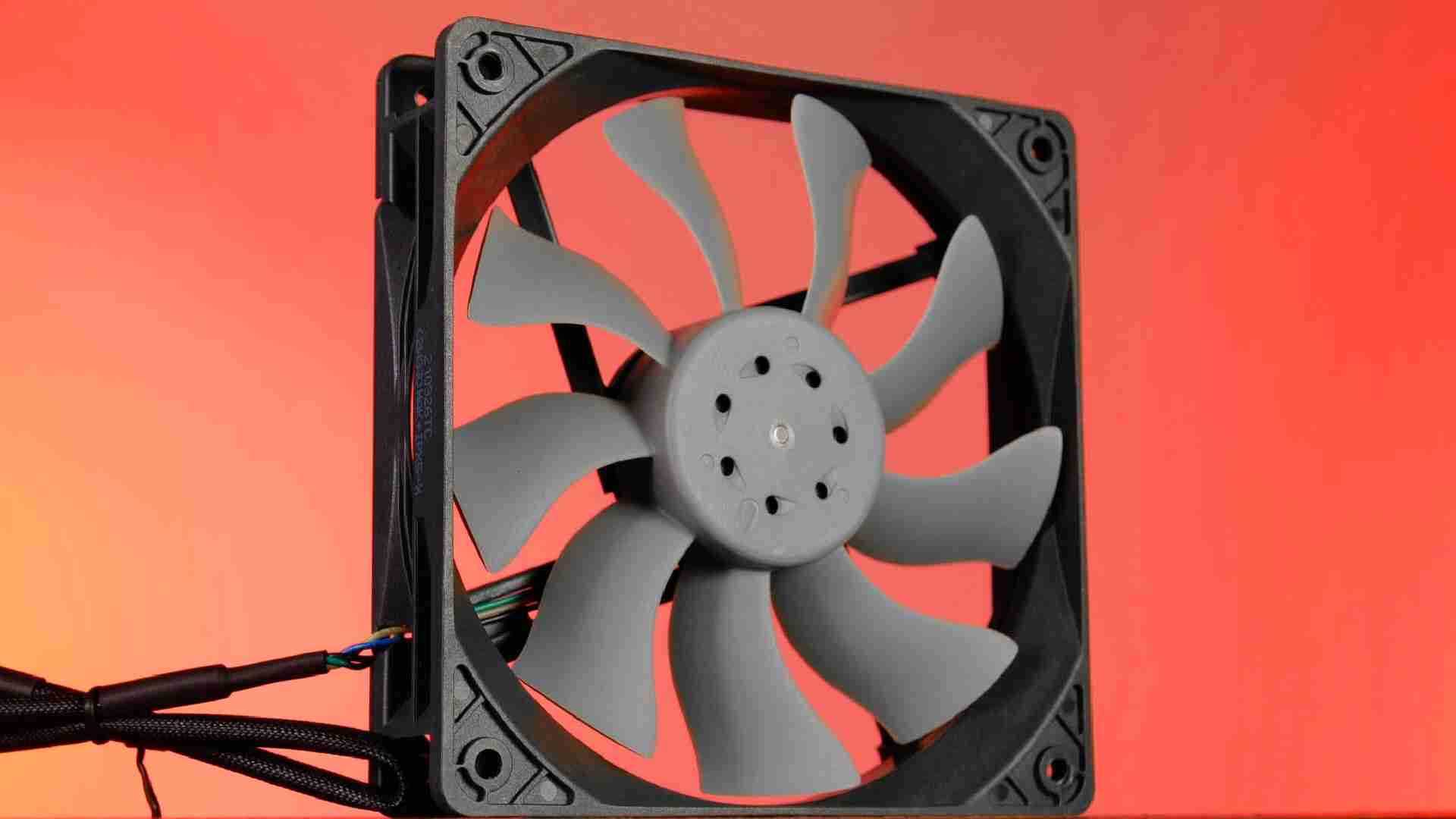
Akasa Otto SF12 Review
Akasas Otto SF12 is their Airflow focused version of their extreme performance Otto lineup. With ear-shattering performance a
Read More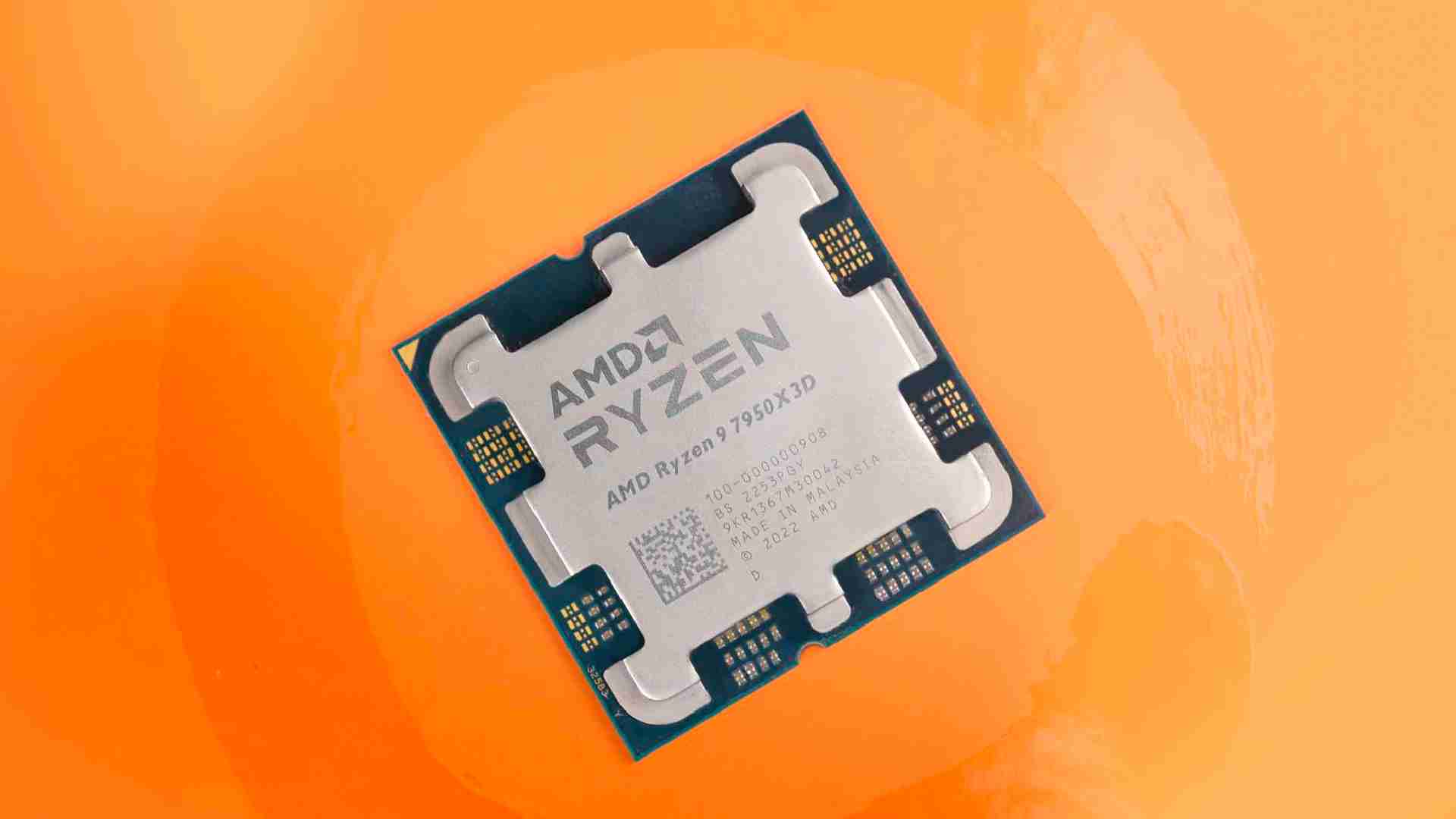
AMD Ryzen 7950x3D Review
With AMDs latest addition to their Ryzen 7000 lineup, they are trying to provide their chips with additional gaming performan
Read More